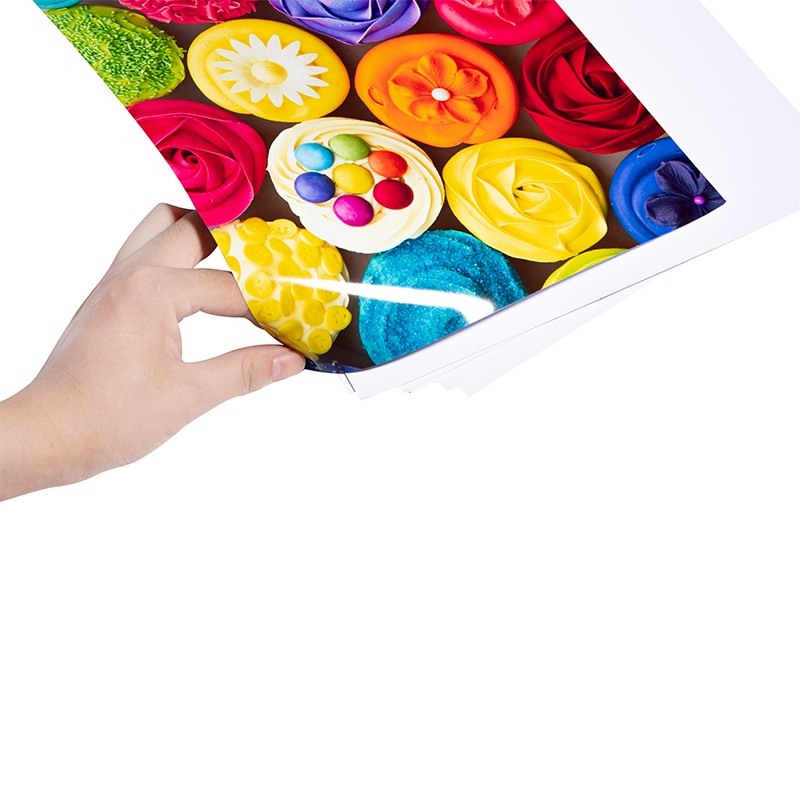If you need any help, please feel free to contact us
Fast Drying Papers For Busy Print Shops
In high-output print shops where deadlines are constant and expectations remain high, achieving consistent results without sacrificing production speed is essential. Among the many factors influencing operational efficiency, the drying time of inkjet photo paper has a particularly significant impact. Prolonged drying can create delays in post-print processing, elevate the risk of smudging, and disrupt established workflows. For this reason, selecting paper engineered for accelerated ink absorption can serve as a practical solution to many common production challenges. This article examines the role of Inkjet Photo Paper and Jojo Photo Paper, highlighting how quick-dry coatings contribute to smoother, more predictable print operations.

The Role of Drying Time in Workflow Efficiency
Whenever large print volumes must be produced under tight schedules, every aspect of the process—from file preparation to final packaging—demands careful coordination. One recurring bottleneck is the interval required for printed sheets to dry sufficiently before handling. Extended drying times can hinder trimming, mounting, and finishing activities, leading to queues that affect multiple production stages simultaneously.
By contrast, papers designed for faster drying can reduce or even eliminate the need for prolonged resting periods. In smaller facilities, where space constraints limit the availability of dedicated drying zones, the adoption of quick-dry materials can free up valuable work areas and improve material flow. Moreover, rapid ink absorption helps limit unintended marks or transfer when freshly printed sheets are stacked or transported.
Jojo Photo Paper, developed with specialized surface coatings, is formulated to accommodate environments in which prints must proceed to subsequent steps almost immediately. This characteristic not only supports higher output but also contributes to a steadier production rhythm, enabling staff to maintain schedules without constant adjustments.
How Quick-Dry Coatings Function
The drying characteristics of inkjet photo papers are determined largely by their surface composition. In quick-dry varieties, engineered coatings are applied to facilitate rapid penetration and fixation of water-based dye inks. These coatings act by drawing moisture below the surface while ensuring that pigments remain concentrated in the upper layers, preserving image vibrancy and detail.
Jojo Photo Paper employs microporous structures that distribute ink uniformly, which is especially valuable when dealing with images that contain dense color regions or subtle gradients. Consistent absorption not only promotes visual clarity but also minimizes defects such as pooling or uneven texture that can arise if drying occurs inconsistently across a sheet.
It is worth emphasizing that even high-performance papers require appropriate environmental controls. Maintaining stable temperature and humidity ensures that drying times remain consistent from job to job, reducing unexpected variations that could compromise quality or efficiency.
Compatibility With Common Inkjet Systems
In addition to drying speed, compatibility with established printing hardware and inks is a critical factor in selecting an appropriate paper. Jojo Photo Paper is optimized for water-based dye inks widely used in devices from Epson, Canon, and HP, which allows print shops to adopt faster drying materials without the need to modify print settings or invest in specialized equipment.
This alignment with existing technologies is especially beneficial for operators managing diverse workloads, as it reduces the likelihood of disruptions when switching between different media types. By supporting standard print modes, the paper simplifies job setup and shortens the learning curve for staff who may be new to specialized materials.
For any print shop considering a transition, conducting a series of test runs is advisable. Controlled tests help verify whether the chosen paper achieves the expected balance of drying speed, color fidelity, and mechanical handling on the specific equipment in use.
Benefits Beyond Drying Time
While quicker drying often serves as the primary motivation for adopting specialized photo paper, its value extends well beyond this singular attribute. Papers engineered with high-quality coatings can also promote sharper image reproduction and more uniform color distribution, which is particularly important for commercial applications where visual presentation directly influences customer perception.
Durability represents another relevant consideration. Papers that resist curling and surface distortion maintain a more professional appearance through finishing and delivery. In this regard, Jojo Photo Paper combines quick-dry technology with consistent coating quality, supporting a wide range of output needs, from promotional materials to photo enlargements.
Furthermore, the ability to handle printed sheets promptly enables more consistent scheduling of downstream processes such as lamination or mounting. This efficiency reduces the likelihood of last-minute delays and provides greater flexibility in responding to unexpected changes in production priorities.
Considerations for Implementation
Adopting fast-drying inkjet papers does not inherently demand sweeping changes to operational procedures; however, thoughtful preparation can smooth the transition and maximize benefits. Training personnel to recognize and address residual moisture, particularly in scenarios involving heavy ink coverage or atypical environmental conditions, is essential to sustaining quality standards.
Proper storage protocols also contribute significantly to predictable performance. Sealing paper until it is needed helps prevent exposure to humidity, which can degrade coating effectiveness and extend drying times. Additionally, facilities that establish routine inspections for printed output prior to finishing are more likely to avoid preventable damage.
Regular communication between production teams and suppliers can further streamline adoption. By sharing feedback about real-world performance, print shops gain insights that can inform future purchases and adjustments.
In production environments characterized by high volumes and demanding timelines, the drying time of inkjet photo paper plays a decisive role in determining overall efficiency. Selecting papers such as Jojo Photo Paper, which combine accelerated drying with broad hardware compatibility, can help organizations create smoother workflows and more predictable schedules.
Beyond mere speed, these papers also contribute to consistent presentation and simpler handling, making them a practical investment for businesses aiming to elevate both output quality and operational agility. For print shops interested in exploring how fast-drying materials can integrate with their current processes, targeted trials and consultations with knowledgeable suppliers can provide the clarity needed to make confident decisions.

 English
English Español
Español 中文简体
中文简体 Português
Português

